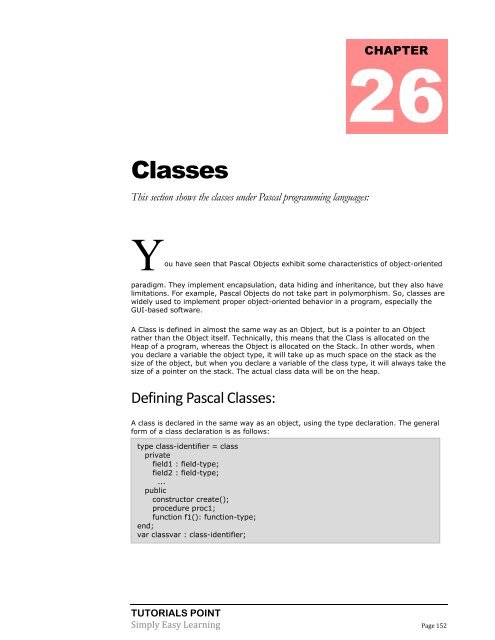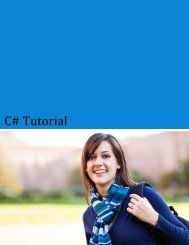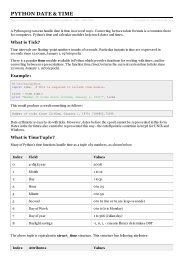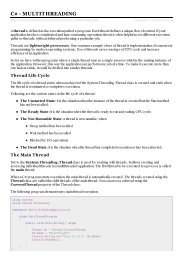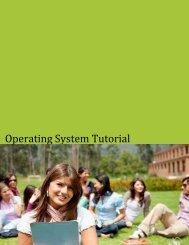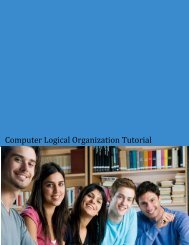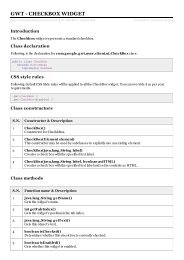download pascal tutorial (pdf - Tutorials Point
download pascal tutorial (pdf - Tutorials Point
download pascal tutorial (pdf - Tutorials Point
Create successful ePaper yourself
Turn your PDF publications into a flip-book with our unique Google optimized e-Paper software.
Classes<br />
This section shows the classes under Pascal programming languages:<br />
CHAPTER<br />
26<br />
You have seen that Pascal Objects exhibit some characteristics of object-oriented<br />
paradigm. They implement encapsulation, data hiding and inheritance, but they also have<br />
limitations. For example, Pascal Objects do not take part in polymorphism. So, classes are<br />
widely used to implement proper object-oriented behavior in a program, especially the<br />
GUI-based software.<br />
A Class is defined in almost the same way as an Object, but is a pointer to an Object<br />
rather than the Object itself. Technically, this means that the Class is allocated on the<br />
Heap of a program, whereas the Object is allocated on the Stack. In other words, when<br />
you declare a variable the object type, it will take up as much space on the stack as the<br />
size of the object, but when you declare a variable of the class type, it will always take the<br />
size of a pointer on the stack. The actual class data will be on the heap.<br />
Defining Pascal Classes:<br />
A class is declared in the same way as an object, using the type declaration. The general<br />
form of a class declaration is as follows:<br />
type class-identifier = class<br />
private<br />
field1 : field-type;<br />
field2 : field-type;<br />
...<br />
public<br />
constructor create();<br />
procedure proc1;<br />
function f1(): function-type;<br />
end;<br />
var classvar : class-identifier;<br />
TUTORIALS POINT<br />
Simply Easy Learning Page 152


